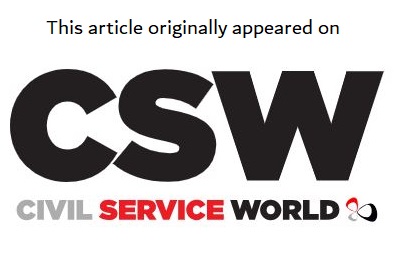A new study from the National Audit Office warns that departments lack sufficient understanding of the costs of services, a problem exemplified by the recent Top 75 digital transformation programme
Departments must improve their understanding of the costs of delivering their services if they are to hit targets for productivity and efficiency savings, the National Audit Office has said.
A new NAO report finds that the current lack of insight is exemplified by digital work undertaken over the last few years to ensure that the majority of government’s 75 most critical services met a defined ‘great’ standard.
Running from 2022 to 2025, the ‘Top 75’ programme was led by the Central Digital and Data Office (now part of the Government Digital Service) and aimed to identify the costs in the 75 most used government services. But, according to auditors, suffered from inconsistencies in approach and a lack of sustained focus on data infrastructure.
“A lack of sponsorship to improve data in departments and other public bodies limited its progress and the programme closed with only 29 of the top 75 services being assessed as ‘great’,” the NAO said.
The report added that this example highlights a recurring challenge: “that without sustained effort, government will find it difficult to identify the basic data needed to understand what drives the cost of services and where money is being wasted so as to improve efficiency and productivity”.
“Yet the potential value of robust cost data is significant,” the report adds. “It can inform better decision‑making, support productivity gains, and help deliver on the government’s growth agenda.”
Public bodies should therefore “act with urgency to build a clearer, more consistent understanding of service costs”, the NAO said.
Related content
- Great expectations: Government unveils new digital and data strategy
- GDS seeks £100k-plus director duo to oversee public sector AI and service transformation
- HMRC Transformation Roadmap: New citizen services, more revenue and ‘cultural change’ across department
The report also warns that government departments often lack insight into what drives the cost in individual activities that collectively make up an end-to-end service. It says government expects to spend £450bn annually on its operations, yet some departments and arm’s-length bodies do not know the costs of individual services at a more granular level, nor where excess costs arise from manual workarounds for cumbersome systems and poor-quality data from fragmented sources.
The NAO finds that this cost information deficit is a “barrier” to achieving the “ambitious” productivity and efficiency aims set at the 2025 Spending Review, as it means government cannot prioritise interventions in the most expensive or inefficient areas.
Gareth Davies, head of the NAO, said: “Simple budget reductions will not achieve the efficiency or productivity gains that government wants in order to improve value for taxpayers and service users. A better and more detailed understanding of the cost of individual components of service delivery is needed to help managers improve performance.”
The NAO said that some of the reasons behind the cost understanding deficit include: poor or outdated technology; lack of clear ownership for complete services; weak incentives; and the absence of clear and practical guidance to improve the situation.
Priorities and performance
The watchdog suggested departments can learn from private companies, who “will have processes to identify their running costs”, which helps them to “prioritise resources, identify poorly performing services and inefficiencies, and assess the opportunities for innovation and digital transformation”.
The report makes several recommendations on how public bodies can help build a clearer picture of what lies behind high costs, including:
- HM Treasury and Government Finance Function should work with leading-practice sponsor departments to develop practical guidance to help other government organisations to understand and apply cost analysis techniques to their services, using real examples – not just broad principles
- Permanent secretaries and other senior departmental leaders should create incentives to ensure compliance with the new guidance, such as new performance objectives.
- Departments should define the scope and boundaries for all major services and designate a senior responsible service owner to understand, manage and improve costs at the operational level
- Departmental finance functions should identify where targeted capability building would help ensure that finance teams and service owners are equipped to deliver on these expectations
Commenting on the report, Sir Geoffrey Clifton-Brown, chair of the Public Accounts Committee, said: “The 2025 Spending Review detailed ambitious targets for productivity and efficiency across government. As the NAO report today highlights, the need for government to obtain stronger information on the costs of managing and running departmental services will be essential to achieving these aims and supporting growth.”
Joe Hill, policy director of the think thank Re:State said: “Inefficiency is rife within government. Taxpayers money should be treated with the utmost care, but public services don’t have the data to understand how they’re spending it and whether it’s working well. A fraction of public sector programmes are evaluated, and of those that are many aren’t worth the cost.
This new research lays bare the shocking lack of interest by the government in counting the cost of public services, at a time when public spending is stretched further than ever.”
HM Treasury has been approached for comment.





